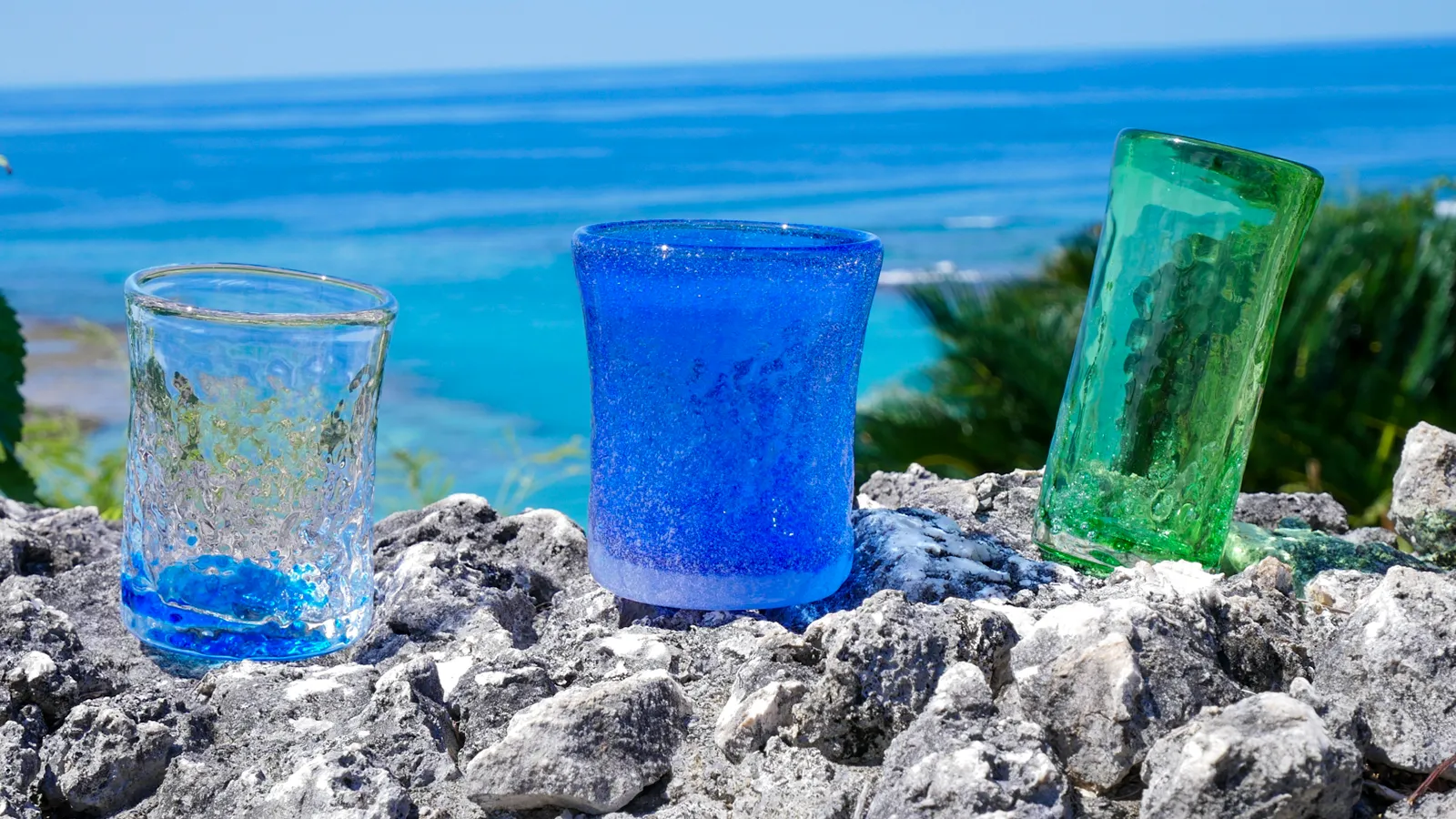Ryukyu glass is a traditional Japanese craft that has fascinated many with its vibrant colors and unique texture. The allure of Ryukyu glass lies in its production methods and the secrets behind its beauty.
In this article, we will explore the history of Ryukyu glass, its intricate crafting process, and the distinct charm that sets it apart. If you want to dive deeper into the historical background and fully appreciate the artistry behind these crafts, this guide is for you.
Table of Contents
The History and Allure of Ryukyu Glass
Ryukyu glass is a traditional craft from Okinawa, known for its beautiful colors and unique textures. Let’s dive into what defines Ryukyu glass and why it is so captivating.
The History and Three Key Features of Ryukyu Glass
Ryukyu glass refers to hand-blown glass products made in Okinawa, and its origins trace back to post-World War II Okinawa. Discarded bottles and glass used in military supplies were recycled, giving birth to this new form of artistry. Here are the three main features of Ryukyu glass:
| Rich Color | Vivid blues and greens reminiscent of the ocean and sky are commonly used. |
| The Beauty of Bubbles | Tiny bubbles, characteristic of hand-blown glass, are scattered within the glass, adding a stunning sparkle when hit by light. |
| Diverse Shapes | From glasses to vases and accessories, each piece is handmade, ensuring no two items are identical. |
These characteristics give Ryukyu glass its unique appeal, making it a popular choice for collectors and enthusiasts.
The Unique Appeal of Ryukyu Glass
What sets Ryukyu glass apart from other glassworks is not just its visual beauty but also its connection to history and culture. Each piece carries the warmth of being handcrafted, which is something mass-produced items lack. Ryukyu glass grew alongside Okinawa’s post-war recovery, allowing you to feel the region’s history and culture through every piece.
Many of the works are now crafted not only as art but also as functional items for everyday use, increasing their popularity as gifts. Whether purchased as a souvenir from Okinawa or given to someone special, Ryukyu glass offers a unique combination of craftsmanship, passion, and deep cultural roots.
The Crafting Process of Ryukyu Glass

Ryukyu glass stands out for its stunning colors and textures. This captivating glasswork is the result of skilled craftsmanship and careful production. Let’s break down the essential steps involved in creating Ryukyu glass, including the use of recycled glass.
The Basic Production Process of Ryukyu Glass
Several key steps are involved in making Ryukyu glass, where each phase showcases the artisans’ expertise and creates the unique beauty found in these glassworks. Below are the steps in the production process:
| Raw Material Mixing | Key materials include silica sand, soda ash, and limestone. These are mixed in precise proportions and melted at high temperatures. |
| Melting | The raw materials are melted at around 1400°C to create molten glass. Additional materials are also added to adjust the purity and color of the glass. |
| Blowing | Molten glass is gathered on the end of a metal pipe, where artisans blow into it, expanding the glass. This “blown glass” technique shapes the glass. |
| Shaping | Various tools are used to mold the blown glass into its final form. The artisans add fine details with their hands. |
| Cooling | The glass is cooled slowly to prevent cracking. This process can take several hours or even days. |
| Finishing | Once cooled, the glass is polished and refined, bringing out its final beauty. |
Ryukyu Glass Uses Recycled Materials
One notable aspect of Ryukyu glass is the use of recycled glass. Discarded bottles and old glass products are repurposed, giving the finished works a unique character and eco-friendly appeal. Recycled bottles, sourced from local homes and restaurants, are cleaned, sorted, and crushed before being melted down for new creations. This process produces the distinctive hues and textures that Ryukyu glass is known for.
By using recycled glass, Ryukyu glass represents an environmentally conscious form of craftsmanship, aligning with the goals of sustainability.
The Secrets Behind the Beauty of Ryukyu Glass: Colors and Bubbles
Ryukyu glass is admired for its vivid colors and unique designs. Let’s delve into the secrets behind its beautiful hues and the charming bubbles that give each piece a distinct texture.
The Secret to Ryukyu Glass’s Vibrant Colors
One of the defining features of Ryukyu glass is its vibrant color palette. Here are some key elements that contribute to its colorful charm:
- Experimenting with color glass materials
- The use of recycled glass results in one-of-a-kind pieces
- Strict temperature control enhances the texture and appearance
Experimenting with Color Glass Materials
The colors in Ryukyu glass are determined by the metal oxides added during the production process. For instance, cobalt oxide produces blue, chromium oxide results in green, and manganese oxide yields purple. Artisans meticulously adjust these combinations through trial and error to achieve the desired shades.
Recycled Glass Creates Unique Pieces
The color of recycled glass often influences the final product, producing subtle variations and intricate patterns. Mixed shards of different colors form marbled or gradient effects, contributing to each piece’s uniqueness.
The Allure of Bubbles in Ryukyu Glass

Another hallmark of Ryukyu glass is the bubbles embedded in the glass. These bubbles form naturally during production, adding a distinctive texture and pattern to the glass. Artisans may even intentionally enhance this feature, making it a central design element.
Conclusion
Ryukyu glass, with its colorful and textured design, embodies the rich history and artistry of Okinawa. Whether as a gift, a decorative piece, or an everyday item, the beauty and warmth of Ryukyu glass continue to captivate admirers around the world.


